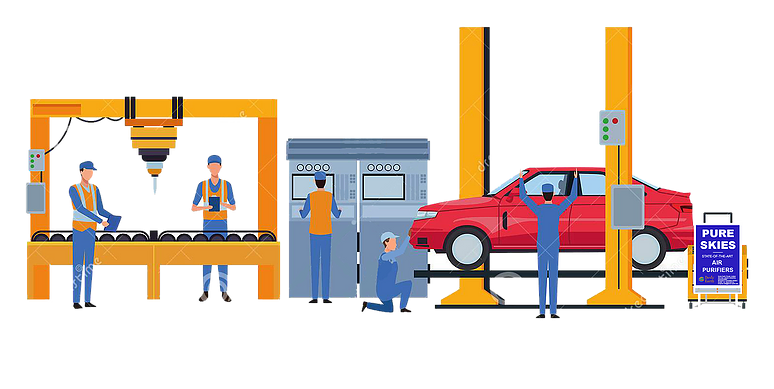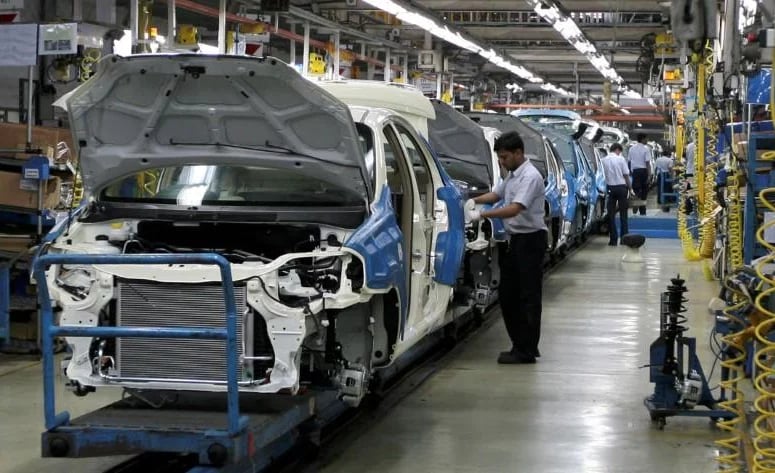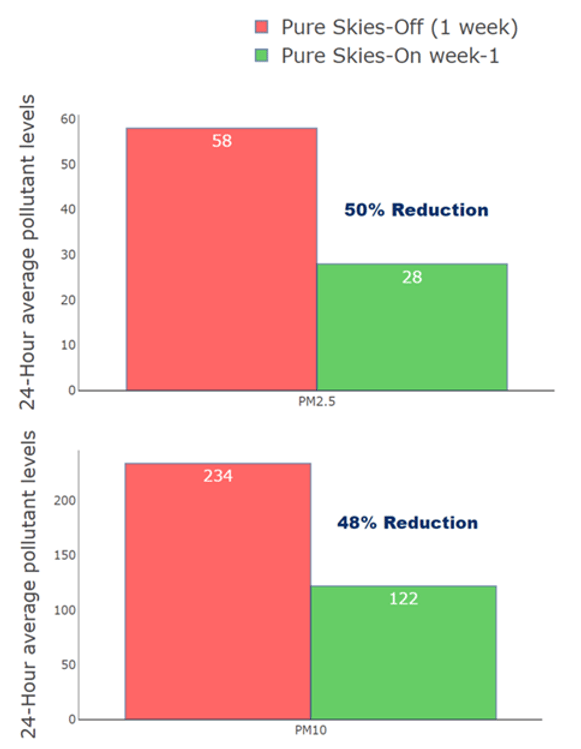Air pollution control equipment for automotive plants

What we did:
Pure Skies pollution control equipment reduced PM2.5 and PM10 and 50% and 48%, respectively, at an automotive plant.
The problem:
Anyone working in a factory where automobile parts are being produced knows how poor air quality can get. Particulate pollutants – PM10 and PM2.5 – released during operations affect the well-being of workers at the plant, the plant’s residential colony, as well as surrounding communities.

PC:spectro.com
One of Devic Earth’s partners, a leading manufacturer in the automotive industry, wanted to improve air quality at one of their plants. The plant was already equipped with the latest air pollution control equipment and followed best practices for management of fugitive emissions.
Despite these measures, air quality measured within the plant premises was poor. Particulate matter – PM10 – was234μg/m3, averaged over one week. This is much higher than what is recommended by the National Ambient Air Quality Standards (PM10 < 100 μg/m3) and 5 to 10 times higher than standards of the World Health Organization.
Employees were exposed to high levels of harmful pollutants which would impact their health and productivity.
The solution:
One Pure Skies 9000 system was installed inside the factory. The installation consisted of one Pure Skies base station and a third party air quality monitors (Airveda Pvt. Ltd., Delhi).

PC: www.reuters.com
The system was configured to handle particulate pollutants (PM10 and PM2.5).
Outdoor air pollutant levels were monitored continuously at appropriate locations inside the plant to help the customer understand the efficacy of Pure Skies, as well as to provide real-time data.
The plant manager and EHS head were given secure logins to view their property’s air quality data on a convenient app.
Power requirements: Routine power supply (ordinary 10A sockets). Each base station and air quality monitor comes with a battery backup.
Once online, the performance of each air pollution control unit is monitored by Devic Earth 24x7.
The outcome:
After Pure Skies was powered On, a steady improvement was observed in the air quality (Figure 1).
In just one week, Pure Skies reduced levels of PM2.5 and PM10 were reduced by 48% and 50%, respectively.
Plant output, number of workers, and local weather patterns remained stable during this period.

Figure 1: Change in pollution levels with Pure Skies at a Automotive plant.
The red and green bars are the Pure Skies-Off(7-days) and Pure Skies-On periods (7-days), respectively. Data source: 3rd party air quality monitor (Airveda Pvt. Ltd., Gurgaon), pre-calibrated against a reference grade monitor.
Pure Skies is a state-of-the-art technology that ensured that the employees at the plant, the plant’s residential colony, and surrounding communities breathe clean air.
